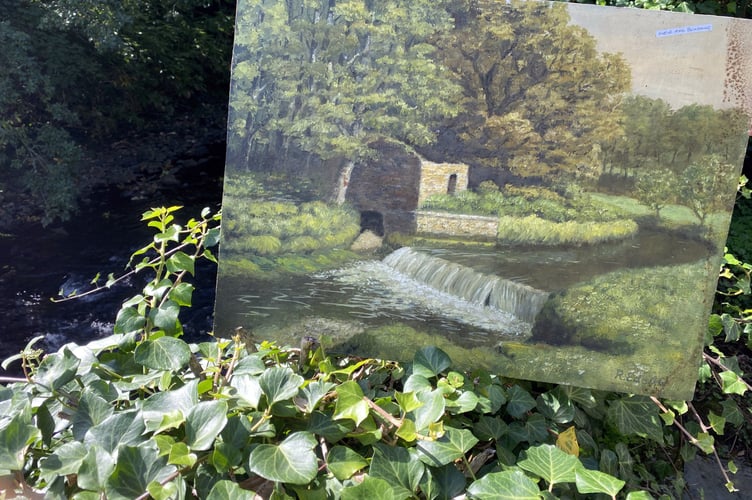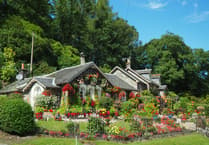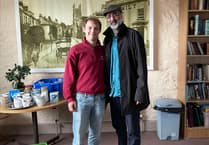Readers are being asked to help identify the location portrayed in a painting by a well-known acclaimed artist from near Bere Alston.
Linda Downing was shown a painting by Richard Woollcombe, of Rumleigh, near Bere Alston, and asked to find out which river location was being protrayed.
The oil painting features a tree-lined slow-moving and meandering river with the focus a ruined roofless overgrown stone building on the opposite bank next to a weir.
The building appears to be a kind of water mill with a stone slope exitting the ruin and a gulley meeting the river where the weir water rushes over a ledge.
Linda said: “My friend’s son bought a box of unframed paintings which includes this one by Dick, as he was known locally. He lived here and painted people and landscapes. I think it’s the Tamar rather than the Tavy.
“But it’s a lovely peaceful picture in my favourite colours. I’d like to be able to tell my friends where it is.”
Richard died in 2016 and his paintings were exhibited in the town centre as a tribute before many were auctioned.
He joined the Tavistock Group of Artists in 1966 which used the Fenner Room (now the museum) to paint sitters.
His work was often humorous and a good example of this is his series of 12 paintings, still adorning the long walls of Derriford Hospital, which he donated to the hospital as a thank-you for two hip replacements. His son Alan donated a further set of 12 of his dad’s paintings showing the changing view down the River Tamar towards Calstock Viaduct to Derriford. All the paintings can be seen on floors 10 and 11 of the hospital.
Another of Richard's paintings is a religious painting at Buckland Monachorum School, of St Andrew with his fish as the patron saint of fishermen.
Linda said: “I have long links with the school and only recently realised it was one of Dick’s paintings.
“He was very talented and that shows in his studies of local people in different locations.
“The hospital paintings cover 12 months of the year which he decided to do after going to the county agriculture show.”
The “West Country Year” as Dick titled the series of paintings in the hospital are described by Dick as catching his “off-beat” sense of humour.
The monthly pictures show aspects of West Devon rural life: These witty pictures include very unimpressed men digging a fuel lorry out of snowdrifts while he puts his feet up in his warm cab and reads the paper; a farmer keeping his feet dry in his broken down Landrover while his put-upon wife pushes him and their pig to market along a flooded road and a line-up of humans admiring the rear ends of show heifers while they are being observed from their own rears by a dog and cat.
Dick was also a Tamar Valley market gardener/grower (on land bought by his father in 1929) and his wry observations also covered flower and produce shows and pick-your own events and farm sales.
He was known as an endearing and charismatic character with a vast collection of artwork.
Alan paid tribute to his father at a retrospective exhibition of his father’s work and said he was reticent and preferred to make things for people to show his appreciation of them because he was very practical.
He made a hen run for his wife and repaired her fridge. He had been a draughtsman at an aircraft factory and used his imagination to entertain his family.
His skills were shown in sometimes cartoonish birthday and Christmas cards. Alan said his father showed sensitivity to human emotion and to nature in landscapes.
Anyone who can help find where the picture was painted should call 01822 613666.




